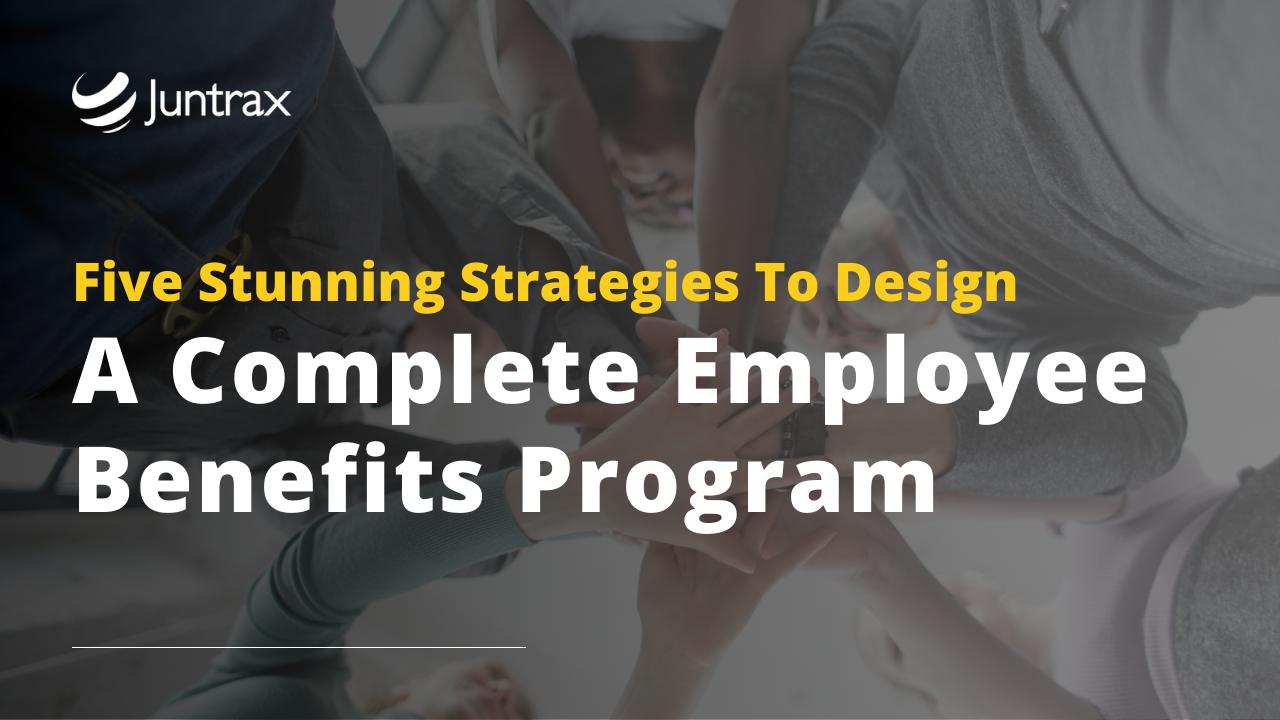Five Stunning Strategies To Design a Complete Employee Benefits Program

A quick reality check– in modern times, just a few paid time off (PTO) and healthcare package fall short in front of the mounting issues in the professional and personal lives of employees.
Which firms would take care of them financially after their retirement?
Which companies provide tele-health services for emergency medical guidance on a Sunday night?
And if they decide to adopt a child into their expanding family, who will offer parental leave?
These are some of the few questions that bother them.
In such a scenario, the most effective method to meet the complicated and evolving needs of your workforce is to create a solid Employee Benefits strategy. Being absolutely fruitful in developing an encouraging work environment, an employee benefits plan is a road map for your recruitment and staff retention campaigns.
In this article, we’ve narrowed down several kinds of employee perks that you need to incorporate and the strategies to design a comprehensive employee benefits program. Read on to know more!
Three Must-Have Employee Benefits
The umbrella term “Employee Benefits” comprises a whole range of workplace benefits. Although every organization designs its compensation program in a different way, here are three key categories to be aware of:
Compulsory benefits
Depending on your company’s location, you might need to offer your staff some basic perks like:
- Community Security
- Workers’ compensation, includes payments for lost wages, healthcare, job rehabilitation, and other advantages
- Insurance for the unemployed
- Prolongation of Health Insurance (COBRA)
- Disability insurance benefits (as per the Family and Medical Leave Act)
- Sick leave
Health Insurance Benefits
Considering the current situation, it’s crucial to support the physical and mental wellness of your employees. This might appear as follows:
- Medical coverage (such as prescription drugs, doctor visits, and hospital stays)
- Dental insurance benefits
- Vision insurance benefits
- Accounts for Flexible Spending (Employees are given a stipend to use as they see fit.)
- HSA or Health savings account (Employees are permitted to set away pre-tax funds for healthcare expenses.)
- Health Reimbursement Plans (Employees receive tax-free money to cover qualified medical costs specific to their needs.)
- Mental health counseling
- Stress management classes
- Dietary advice, and other wellness programs
Financial Benefits
According to MetLife in 2023, 48% of employees reported that their financial worries were negatively affecting their mental health.
Employers can provide financial security to their employees in the following ways:
- 401(k) plans (employers and employees contribute to this company-sponsored retirement plan)
- Life Insurance Benefits
- Equities compensation (a form of employee reward whereby employees are given stock options in the company)
- Plans to buy stocks (A form of employee reward whereby employees getting equity compensation may buy and own stocks.)
- Bonus schemes
- Plans for incentives and acclaim (programs that link monetary awards to career milestones, accomplishments, anniversaries, and birthdays)
- Financial planning
Now that you’re aware of the kinds of employee perks you need to incorporate, let’s dive right into the ways to create an employee benefits program.

Strategies to Design a Comprehensive Employee Benefits Program
The foundations of a compelling strategy will include obligations for contributions, benefit design, communication, delivery, and compliance costs. If you want to provide a benefits package that is truly competitive, you’ll also need to keep track of employee trends in the larger labor market. Follow these five strategies to succeed.
Determine the organization’s goals, objectives, and budget
Finding the goals is the most significant step in establishing an employee benefits program. In most cases, this approach does not result in the enlisted benefits; rather offers a summary of the organization’s goals for providing perks that take into account the requirements of both the employer and the employee. The formulation of the objectives will be guided by the HR of the organization because these objectives should aid in achieving the overarching strategic goals.
Establishing the budget is equally crucial because it will influence the overall employee benefits packages you can offer. When summarizing everything, remember to account for extra expenses like implementation fees, foreign currency fees, administrative expenditures, and the possibility of price hikes. If your employees don’t spend their entire allowance, it’s important to know if your perks are refundable.
Examine the demography of your entire workforce
Instead of considering a certain character when planning your perks, consider your workforce demographic. Design your benefits package in a way that appeals to employees of every generation. Notable points are:
- By 2024, a quarter of the U.S. workforce will be over 55. This would thereby make them eligible to receive retirement, financial planning, and health insurance benefits.
- Ensure family planning benefits since 68% of younger adults would be likely to switch jobs to acquire fertility support.
- Employees in the “squeezed middle” who are in charge of both youth and senior citizens, may require more help in juggling work and personal life.
Analyze the advantages of competitors
You must be aware of what your competitors are offering in order to surpass them. For a better understanding of the present landscape, undertake benchmarking and research.
Explain the importance of your benefits program
The ideal situation when businesses invest in benefits is for the utilization by their employees to maximize growth, development, and well-being. Explaining the value of your perks to your employees is thus important if you see a lack of participation in your rewards program.
Maintain compliance
Alongside post-employment support, consider the legal standards you must follow as you routinely review your approach. To avoid any sort of issues, be sure you are familiar with both local and federal labor regulations.
Conclusion
Your team members ought to feel valued and heard at all times in the office. What could be more motivating for them than a complete employee benefits package that takes employee wellness into account on every level? By employing the above-described tactics, you can design a plan that caters to the various needs of your workforce. After all, by investing in the future of your employees, you are also investing in the future of your business.
